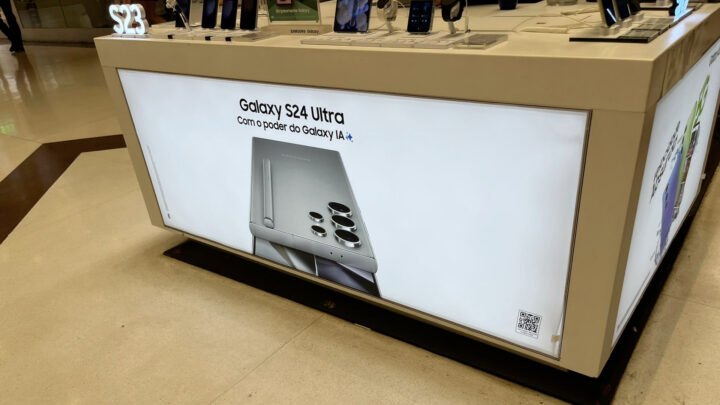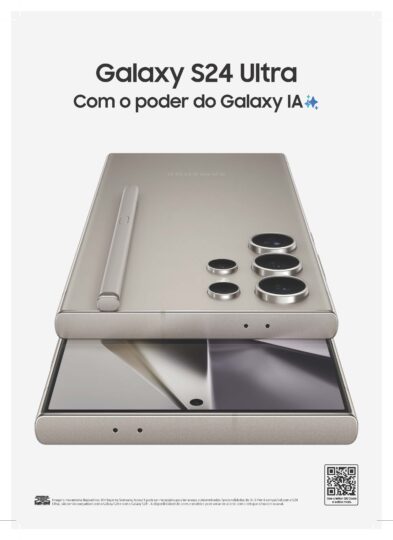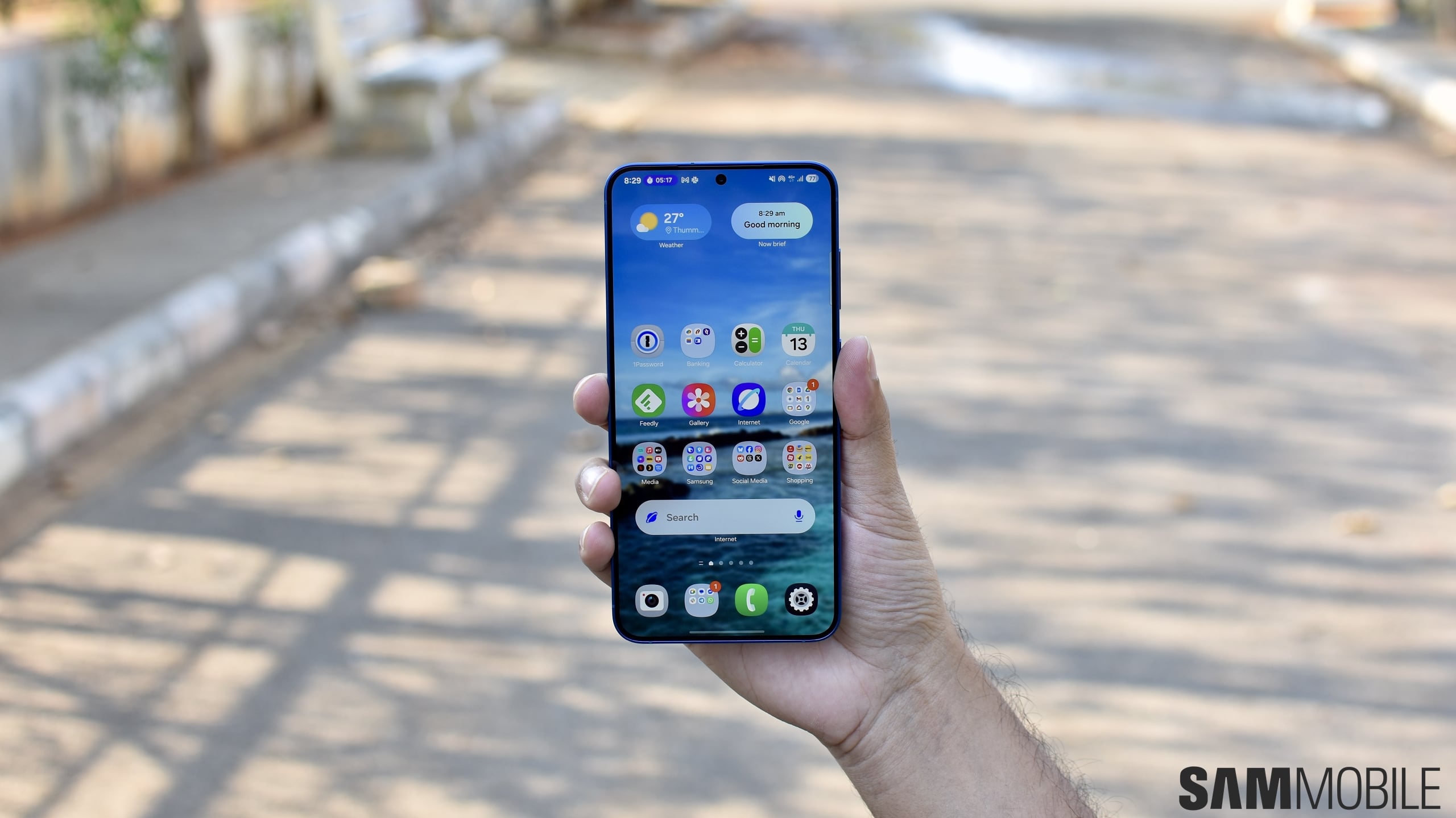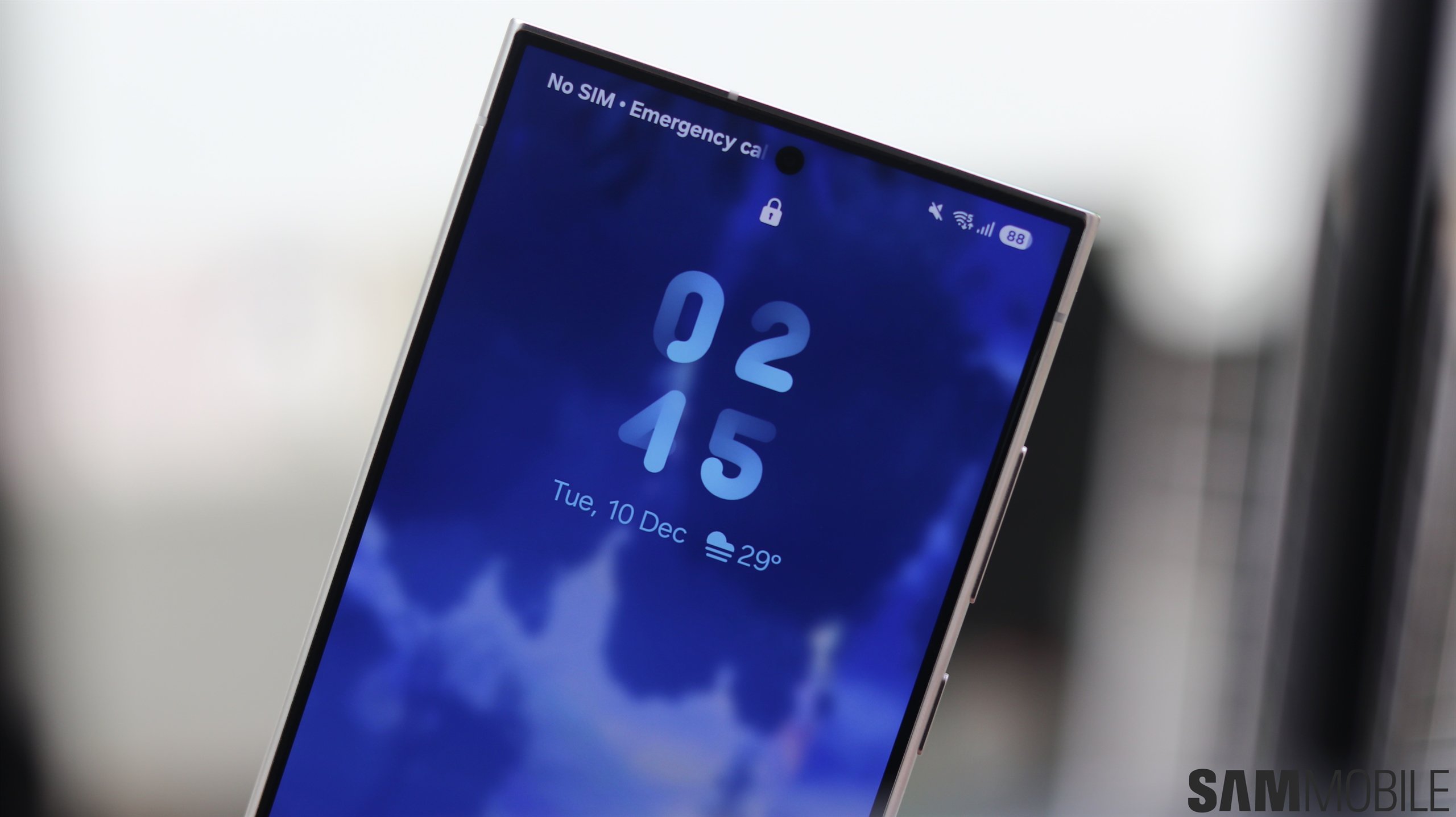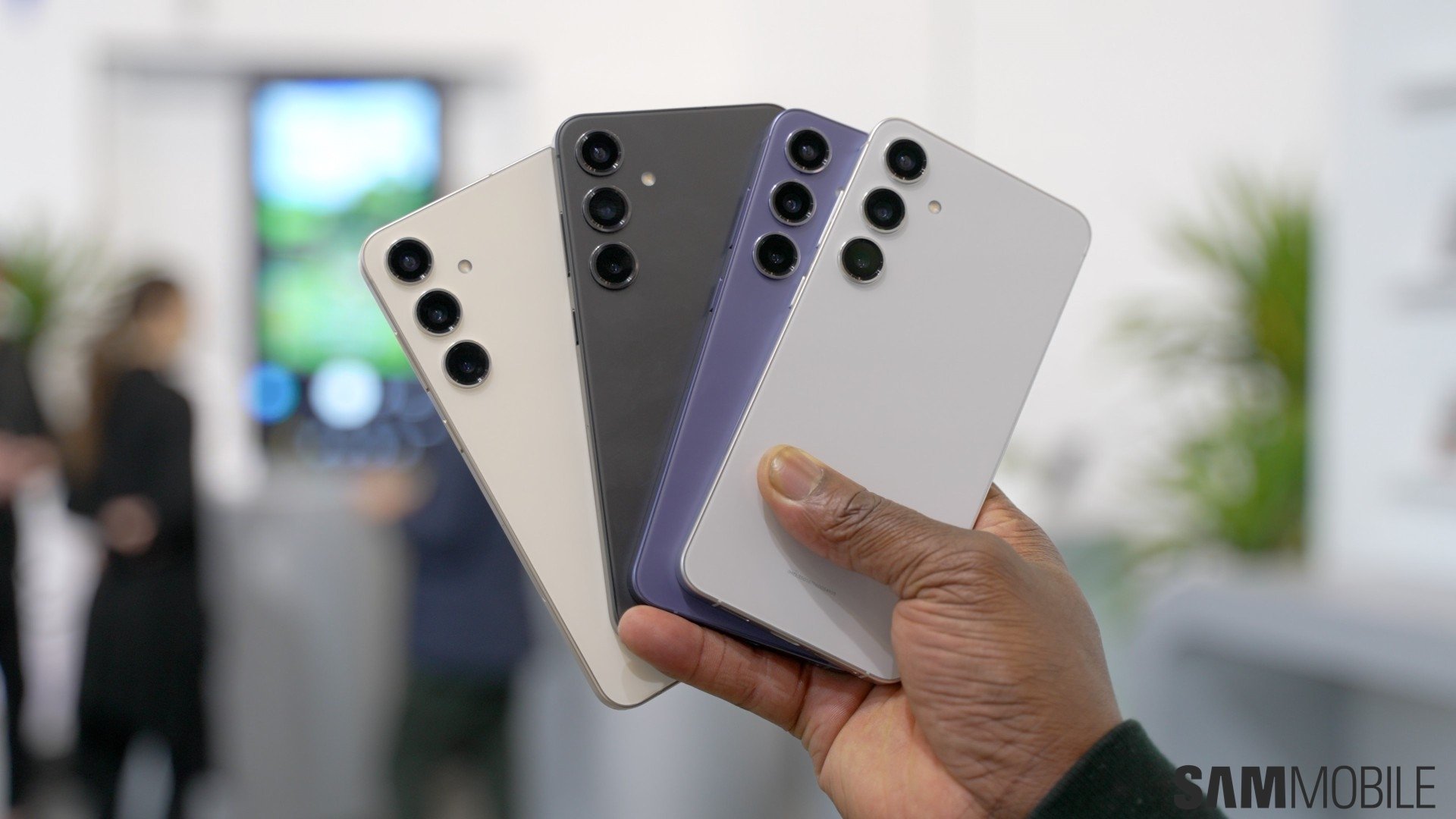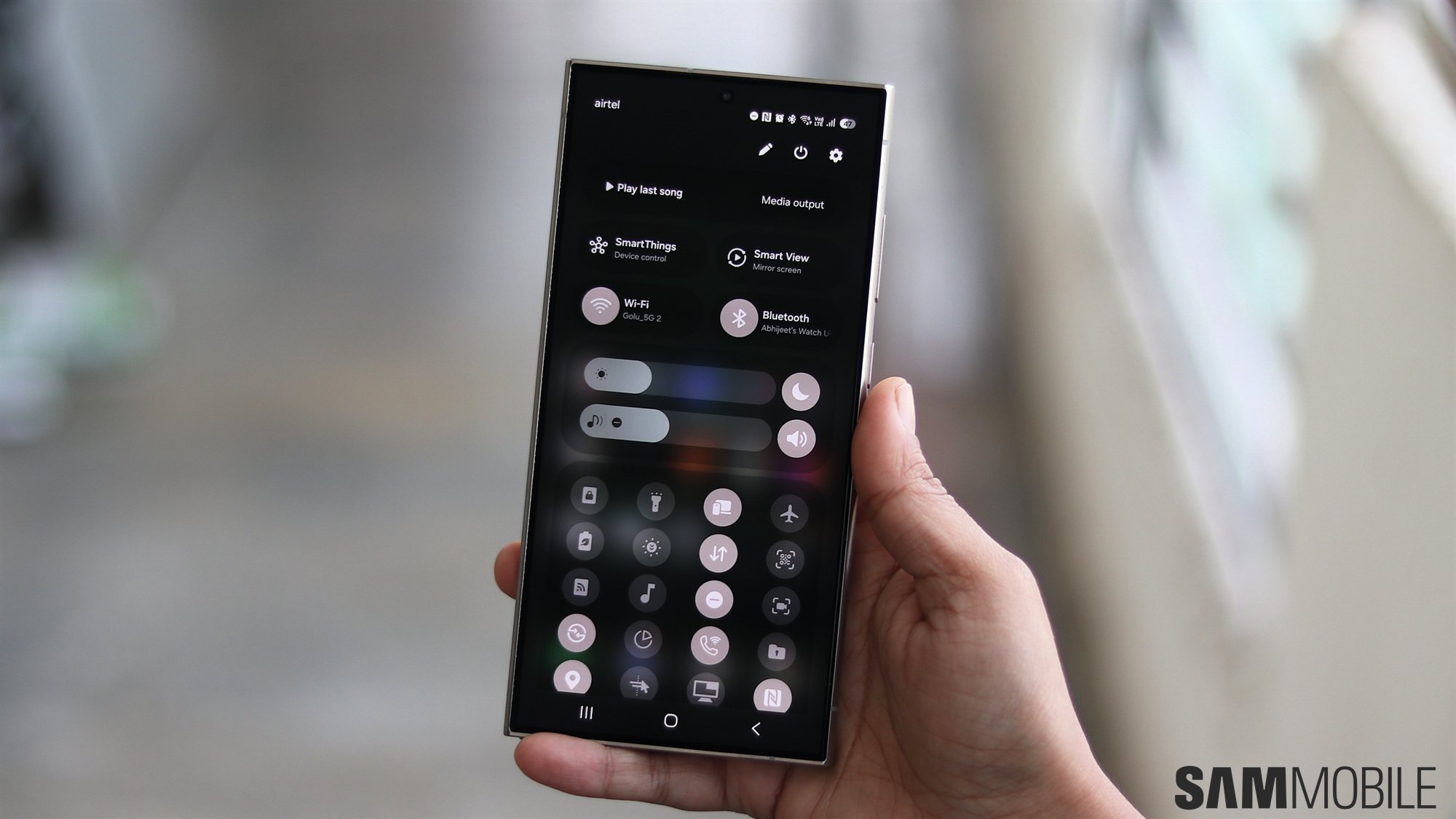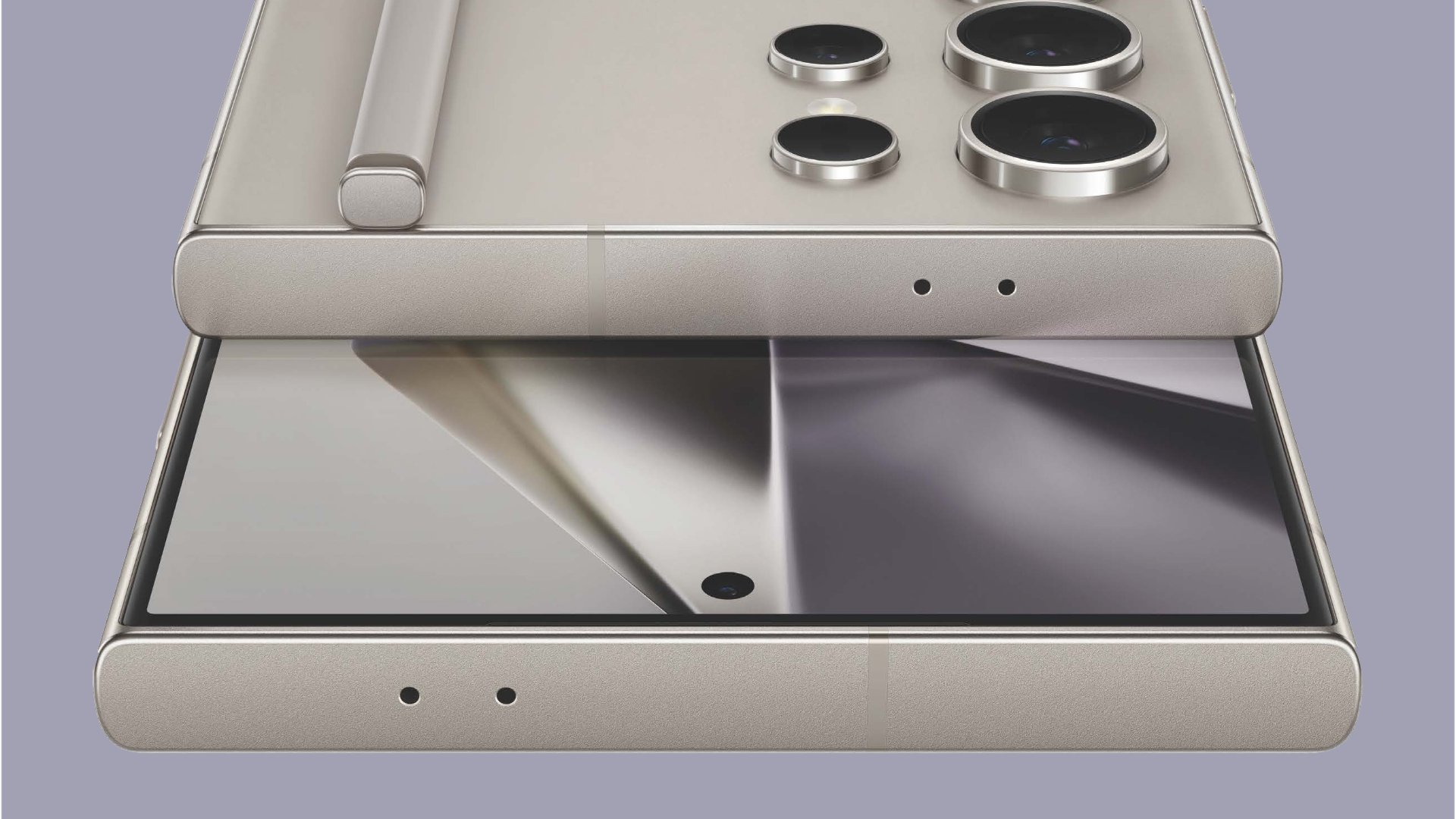
Galaxy S24 Ultra design leaked via posters in Brazil
Several retail stores in Brazil seem to have started displaying the Galaxy S24 Ultra through posters. One such instance was captured and posted on X (via @sondesix), and it clearly showcases the design, cameras, S Pen, and the term ‘Galaxy AI.' In the image below, you can see the Galaxy S24 Ultra in its Titanium Gray version. You can also see the phone's quad-camera setup, accompanied by its laser autofocus unit. You can also see the color-matched S Pen stylus. There seem to be two microphones on the top of the phone. Since there is an antenna line on the top part of the phone's frame, it appears that the phone is using a metal frame, and several leaks point to a titanium frame for added strength.
The poster also mentions Galaxy AI, which is a suite of AI and Generative AI-powered features that will be available on the Galaxy S24 series. The statement below the image of the phone says, “Merely illustrative images. A Samsung Account login may be required to access certain AI features. S Pen is compatible with the S24 Ultra but not with the Galaxy S24 and the Galaxy S24+. The availability of colors and models may vary according to stock and/or channel.”
One UI 6.1 to bring several AI and Generative AI features, debuting on Galaxy S24 series
Samsung will launch the Galaxy S24, Galaxy S24+, and Galaxy S24 Ultra with Android 14-based One UI 6.1 pre-installed. All three phones will have several AI-powered features, including live language translation during voice calls, a Generative-AI-powered wallpaper generator and weather effects for the lock screen wallpaper, notes summarization in Samsung Notes, voice tagging and transliteration of up to ten people from voice recordings, and Generative AI fill in images.














